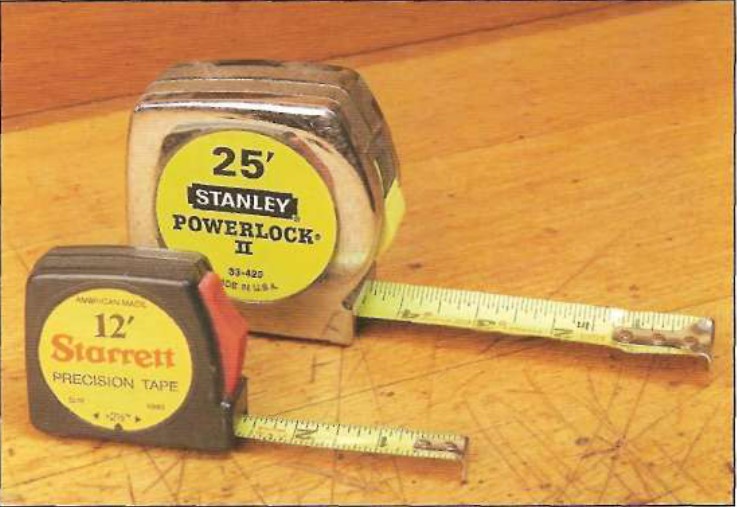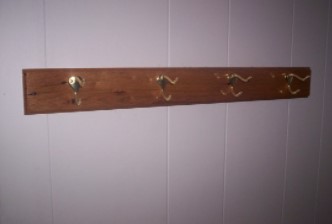I’m sure that when Alvin J. Fellows patented the steel tape measure in 1868, he didn’t expect that his invention would turn out to be one of the most useful of all tools to the woodworker. Although his tape measure didn’t have a locking mechanism for the tape (this was patented by Stanley in 1968), his was the first to print accurate graduations on a steel tape. Today’s tape measures feature spring-loaded tapes that are slightly concave to help hold t h e m rigid over long distances. They’re commonly available in 8-, 12-, 16-, and 25-foot lengths. I’ve always found the combination of a smaller 12-foot and a larger 25- foot tape measure to be all that I need in the shop.
Checking a tape
When you’re buying a tape measure, skip the bargain bin; it pays to buy quality. Go with a name brand you can trust, like Starrett, Stanley or Lufkin. And, take the time to check it for accuracy at the store. To do this, simply extend the tape out several feet and bend it back on itself. Align the inch marks and check to see whether the graduations are even. On cheaper tapes, you’ll often find that the graduations don’t match up.
The hook
Another thing to check for when buying a tape measure is a quality hook that’s securely riveted to the end of the tape, while still allowing it to move freely for inside and outside measurements. The reason the hook needs to slide is for inside measurements: It’s designed to slide in the exact thickness of the hook to provide an accurate measurement.
Inside measurements
Most quality tape measures will have the exact dimensions of the case printed directly on the side of the case. This makes it easy to take an inside measurement. Just butt the case of the tape measure firmly against the side of the work-piece and extend the tape to the other side. With this in mind, you’re always better off choosing a tape measure whose outside case dimensions are easy to work with—it’s a lot simpler to add 3″ to 9 7/16″ than 21/2″- Try to find a case with an even inch dimension.
Outside measurements
An outside measurement is simplicity itself: Just catch the edge of the hook on one edge of the work-piece, and pull to extend the tape. You’re always better off pivoting the tape so that it lies flat on the edge to be measured. This positions the tape flush with the surface and prevents errors from parallax.




